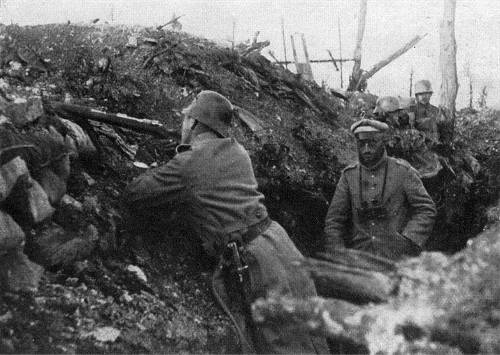
A variety of plants, including rare orchids, and several species of newts and frogs have flourished in them. A few feet in diameter and depth, the depressions are often flooded by the region’s heavy rainfall and shallow water table. Depressions created by spent shells are a popular ecological niche. Researchers have also used the LIDAR data to track the plants and animals that have recolonized or are newcomers to the forest. “It’s controversial to release these data because they might be used by grave robbers illegally looking for artifacts,” Hupy says. The maps are so good that there’s concern about them falling into the wrong hands. Verdun is the toads’ northernmost habitat in Europe. The yellow-bellied toad (above) is new to the Verdun forest, inhabiting water pools formed in depressions originally made by spent shells from the World War I battle.

“We have, down to centimeter resolution, a map of every single feature on the ground,” says Joseph Hupy, a geographer at the University of Wisconsin-Eau Claire who studies the Verdun battlefield. By measuring the reflected light, scientists determined the precise elevations of billions of points on the forest floor.įrom these light detection and ranging (also called LIDAR) data, scientists mapped not only the forest’s vegetation, but also the leftovers of battle: shell craters, trenches, bunkers and underground shelter entrances. During spring, a small plane flew low over the trees, equipped with a laser that emitted thousands of near-infrared pulses each second. In 2013, to prepare for the war’s centenary, the French National Forests Office arranged an aerial survey of the Verdun forest. Meanwhile, the vestiges of war began to be concealed by the returning flora and growth of the planted trees. Most of the visitors were hunters and war remembrance groups. The area was largely left alone for decades. These young trees, along with stands of older growth that survived the fighting, came to be called the Verdun forest. In the 1920s and ’30s, to stave off erosion, government officials oversaw the planting of 36 million trees, mostly pine and spruce, in part of the Zone Rouge. In addition, the memory of the war was too vivid to develop the land for another purpose.

This region was unsuitable for permanent settlement and too dangerous for regular public access. Lead and arsenic, from bullets and bombs, permeated the soil.Īfter the war, the French government purchased the land and designated 23,000 acres as a Zone Rouge (Red Zone).

Human remains, unexploded shells and rusted barbed wire littered the enormous battlefield, which encompassed nine destroyed French villages, including Verdun. Alison Mackey/Discover after “La terre des régions dévastées,” Journal of Practical Agriculture, 1921Īfter 10 months of intense fighting, the destruction of the landscape was so complete that some pilots flying over said it resembled a moonscape.


 0 kommentar(er)
0 kommentar(er)
